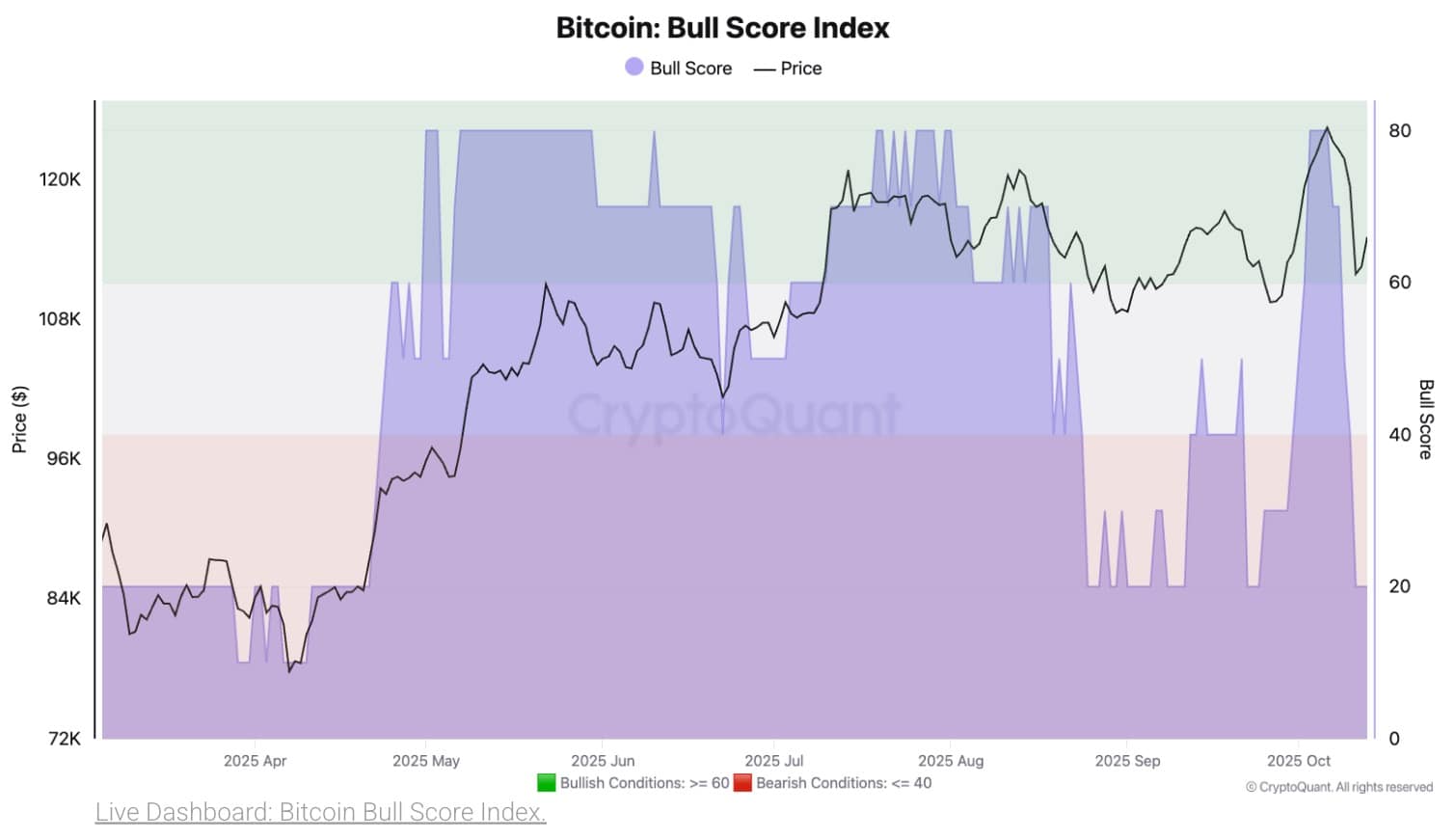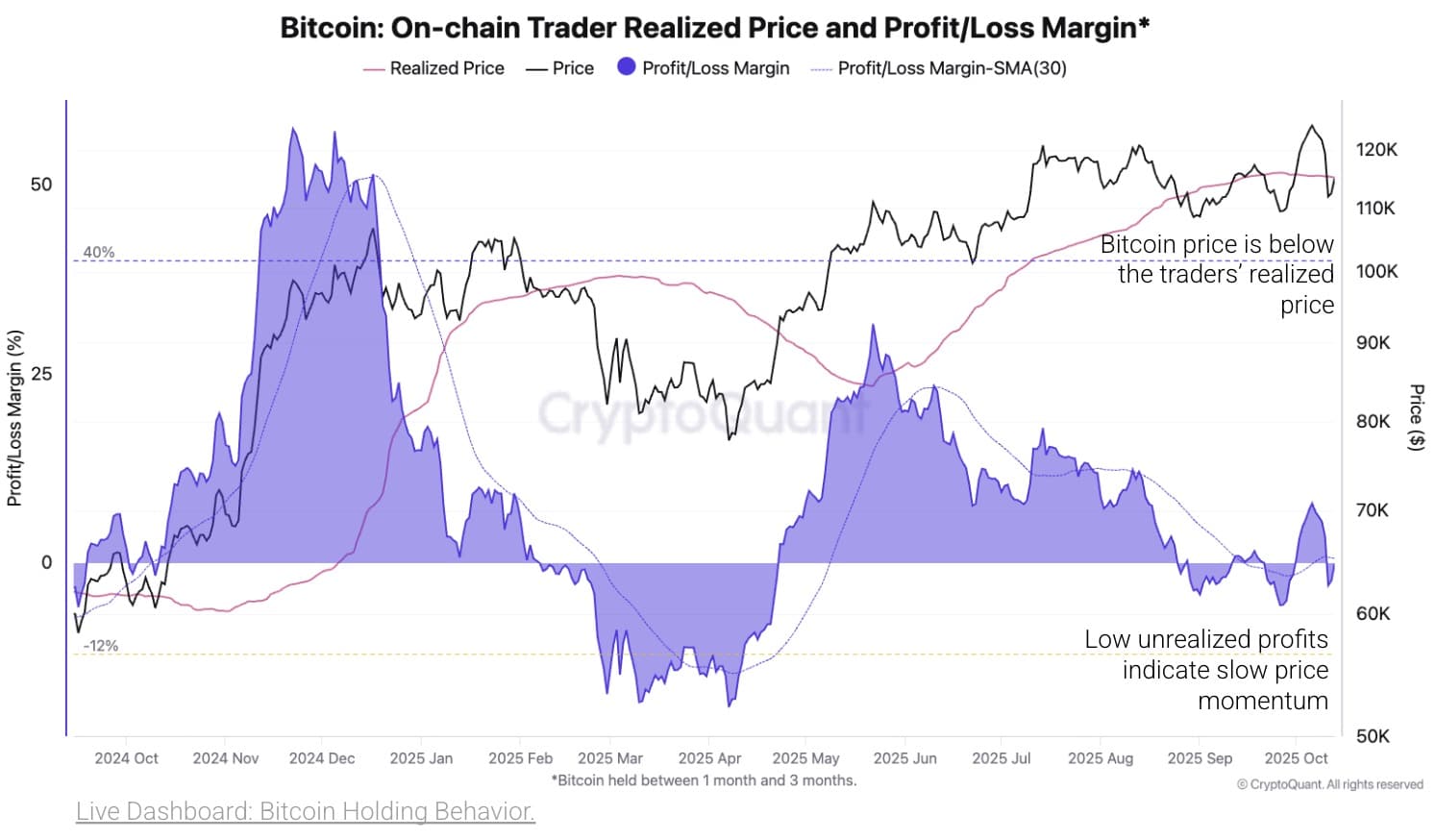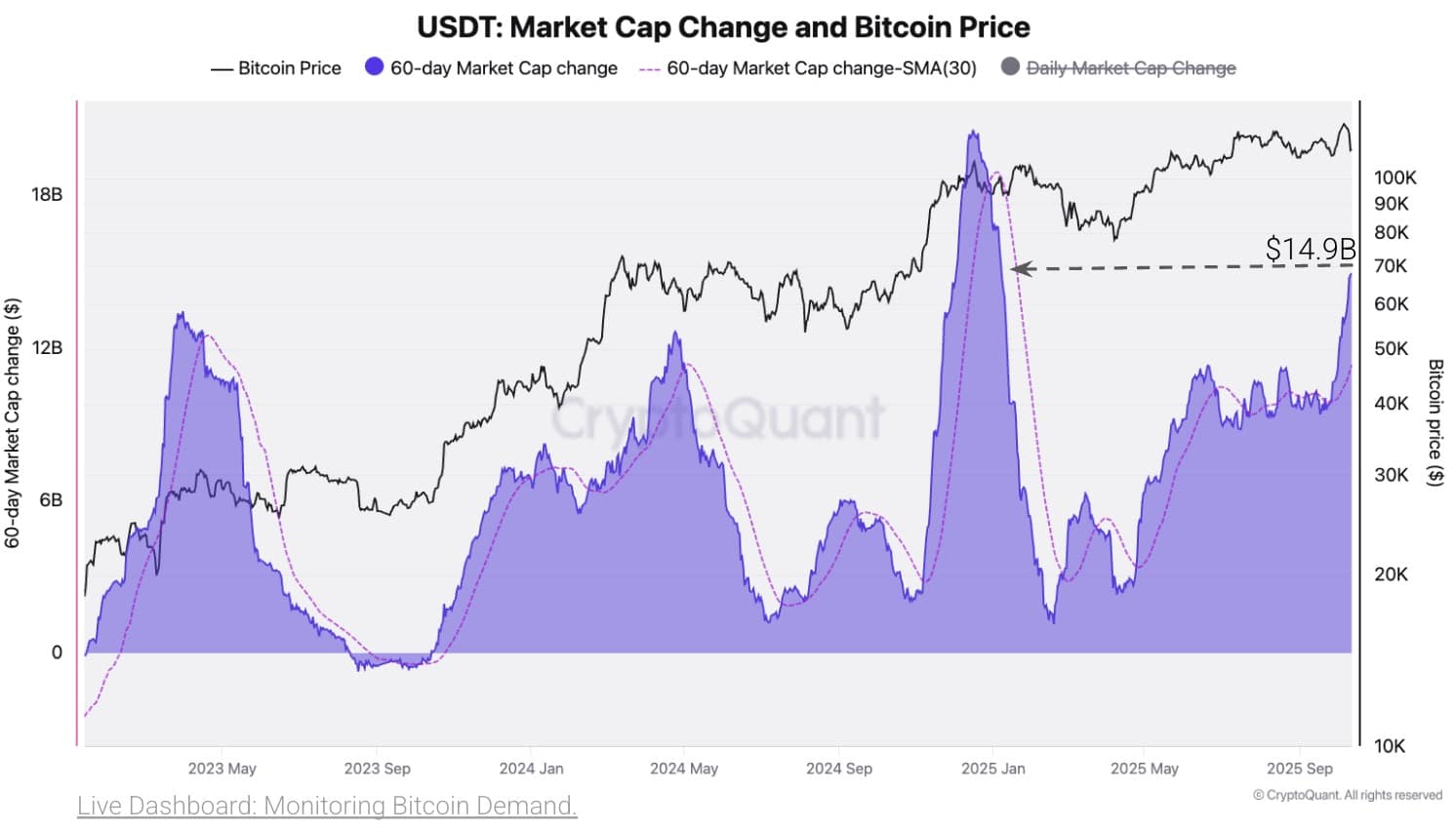Why did Bitcoin drop? Bitcoin fell as CryptoQuant on‑chain indicators — including a plunge in the Bull Score and a 111,000 BTC contraction in Apparent Demand — combined with U.S.–China trade tensions and $21B wiped from derivatives open interest, driving short‑term bearish pressure.
-
CryptoQuant Bull Score plunged from 80 to 20, signaling a sharp shift to bearish on‑chain conditions.
-
Derivatives open interest declined by over $21 billion amid escalating U.S.–China trade tensions, intensifying selling pressure.
-
Stablecoin liquidity rose by ~$14.9B in 60 days and whales increased accumulation, creating a potential recovery backdrop.
Why did Bitcoin drop? CryptoQuant metrics and trade tensions slashed derivatives open interest, fueling the sell‑off; read COINOTAG’s data‑led update and recovery signals.
Published: October 16, 2025 · Updated: October 16, 2025 · COINOTAG
Why did Bitcoin drop?
Why did Bitcoin drop — the decline stemmed from a convergence of on‑chain weakness and macro risk: CryptoQuant’s Bull Score fell sharply and Apparent Demand contracted by 111,000 BTC, while geopolitical trade tensions removed liquidity from derivatives markets, eroding market confidence and amplifying sell‑side pressure.
What on‑chain metrics signaled the sell‑off?
CryptoQuant data showed the Bull Score collapsing from 80 to 20, a rapid shift that historically coincides with increased selling and lower conviction among traders. Apparent Demand recorded a 30‑day contraction of 111,000 BTC, the biggest decline since April, indicating a material drop in spot buying interest starting October 8. Derivatives markets mirrored that stress: reported Open Interest losses exceeded $21 billion, reducing leverage and momentum in the short term. Sources: CryptoQuant (on‑chain data), derivatives market reports (plain text).

What could trigger a rebound?
Recovery is possible if realized profits and on‑chain profitability rise, which would restore market confidence. CryptoQuant identifies the $115,000 level as a key cost basis: a sustained breakout above that threshold would shift many holders back into profit and likely reduce sell pressure.

VALR co‑founder and CEO Farzam Ehsani commented: “The interplay between easing monetary policy and renewed trade tensions continues to define short‑term market dynamics and investor behavior.” Institutional flows also showed continued interest: data cited $102.5 million in fresh Bitcoin purchases reported in the most recent 24‑hour window (plain text reporting).
How could stablecoin growth and whale accumulation affect recovery?
Stablecoin liquidity remains a critical driver of crypto buying power. Over a 60‑day window, USDT market cap change tracked a rise of roughly $14.9 billion, with about $1 billion minted in a single day — a signal that near‑term buying capacity exists if market sentiment improves. Concurrently, large BTC holders moved into an accumulation zone historically associated with pre‑recovery positioning. These two dynamics — ample stablecoin liquidity and whale accumulation — create a plausible foundation for a rebound if risk catalysts ease.

Frequently Asked Questions
How much did derivatives open interest decline during the sell‑off?
Derivatives open interest declined by more than $21 billion amid escalating U.S.–China trade tensions and reduced leverage, contributing to immediate volatility and a reduction in upward price momentum. This figure comes from derivative market reporting and on‑chain liquidity analyses (plain text sources).
Is the current weakness driven by fundamentals or macro risk?
The drop is a combination of both: on‑chain fundamentals weakened (Bull Score and Apparent Demand contractions), while macro developments — notably trade tensions — removed liquidity and risk appetite. The interaction of these factors intensified the sell‑off.
Key Takeaways
- Bullish indicators reversed: CryptoQuant’s Bull Score fell from 80 to 20 and Apparent Demand contracted ~111K BTC, signaling a shift to bearish on‑chain conditions.
- Macro risk drained liquidity: U.S.–China trade tensions coincided with a >$21B fall in derivatives open interest, amplifying the move lower.
- Recovery hinges on demand: A breakout above $115,000, renewed realized profits, growing stablecoin liquidity (~$14.9B increase) and whale accumulation could restore momentum.
Conclusion
The recent Bitcoin sell‑off was driven by deteriorating on‑chain metrics and macro liquidity shocks, notably CryptoQuant’s Bull Score drop and a 111,000 BTC contraction in Apparent Demand, alongside over $21 billion removed from derivatives open interest. While short‑term sentiment is bearish, expanding stablecoin supply and whale accumulation provide a credible pathway for recovery if Bitcoin breaches the $115,000 cost basis and macro risks ease. For data‑led updates and ongoing analysis, follow COINOTAG’s coverage.
Sources (plain text): CryptoQuant on‑chain data; VALR commentary; derivatives market reports; institutional flow summaries. Author: COINOTAG.
